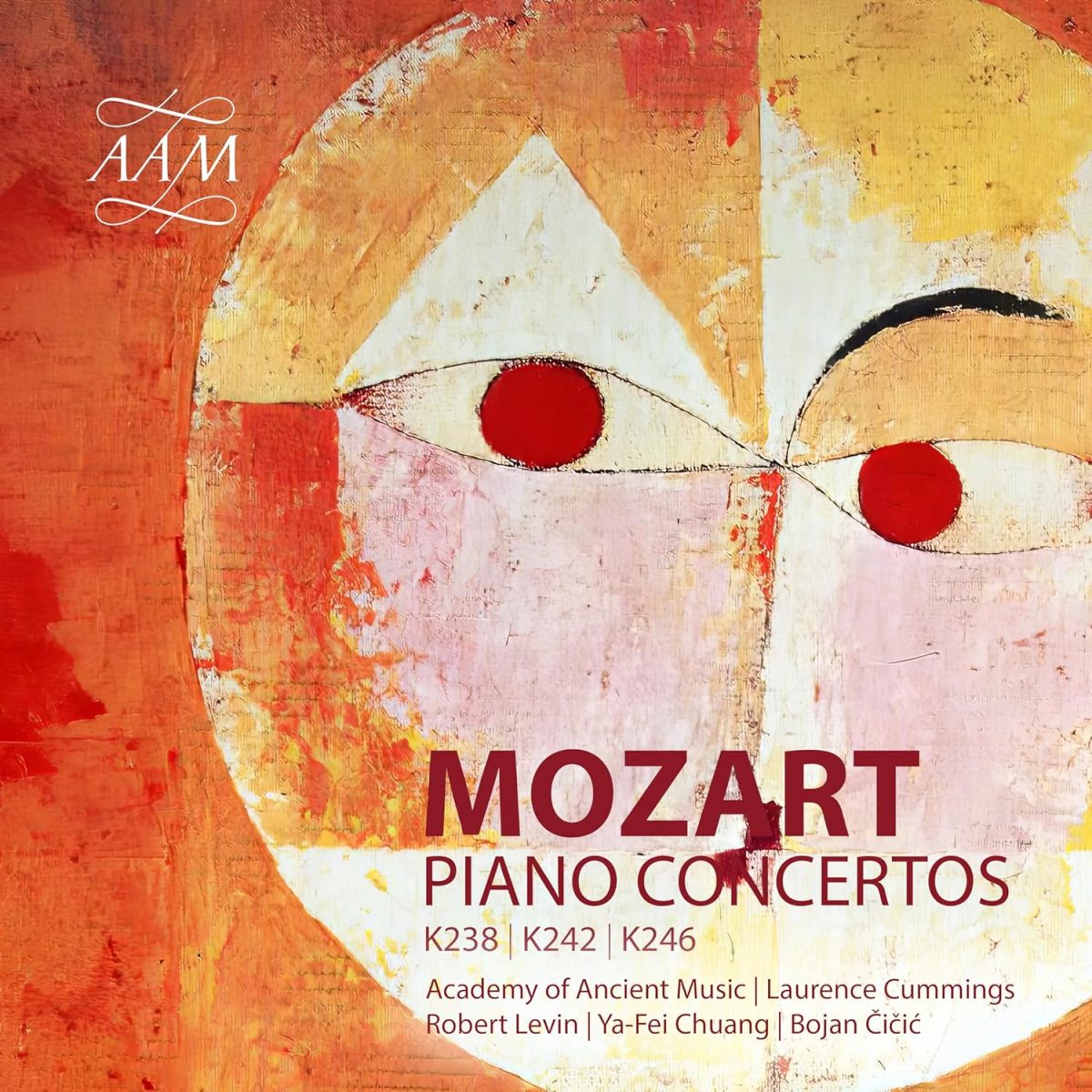K238, 242, 246
Robert Levin, tangent piano, Ya-Fei Chuang, fortepiano, Academy of Ancient Music, Laurence Cummings conductor & harpsichord
60:43
AAM AAM044
I referred to this performance of the three-piano concerto, K242 in my review of its previous incarnation in the series in December 2023. On the earlier disc, it was played by husband and wife team Robert Levin and Ya-Fei Chuang in the adaptation for two pianos made by Mozart, the third piano part being near-redundant (it was composed for the young daughter of one of Mozart’s patrons). As I mentioned at the time – and please refer back to the earlier review for a more detailed introduction to the work – the idea of doing it again in its original version seems to be carrying the concept of the intégrale to extreme lengths. Ah, but there’s a gimmick (or fresh idea, if you prefer) here too, for the performance is given on three different instruments, with Levin playing a modern reproduction of a tangent piano built by Spath and Schmahl in 1794, his wife a copy of an Andreas Stein fortepiano of 1787. Oddly, given the usual sumptuous booklet provided by AAM, the harpsichord played by Laurence Cummings is not identified, hardly a major problem in this case given the instrument is virtually inaudible for much of the time.
The line-up is of course one that Mozart would never have employed and thus rather pointless, though Cliff Eisen argues for it in his usual scholarly fashion. This is particularly pertinent given that the sonority of the tangent piano is not particularly appealing, its upper register being weak and thin, to my ears considerably less attractive than the fuller-bodied, mellow sound of Chuang’s Stein. Unsurprisingly the performance is not greatly different from that on the earlier disc, as the relative timings suggest. As with that performance, the most satisfying and sensitive playing comes in the central Adagio, with, dare I say it, Mrs Levin just edging it for expressive playing over her one-time teacher when she takes up the theme. Needless to say, Levin’s spontaneous extemporary embellishment is as much a pleasure as ever; moments such as the playful second return to the rondo theme of the finale are sheer delight.
Both K238 in B flat and K 246 in F (Numbers 6 and 7) were composed in Salzburg during the first half of 1776. They mark the end of Mozart’s apprenticeship as a piano concerto composer; his next essay in the form would to be the Concerto in E flat, K271, dating from the following year, his first outright masterpiece in the form. Nevertheless, K238 in particular is an especially lovable work, with a slow movement that is the first in the long line of dreamy, moon-lit andantes, here played with real sensitivity. I sensed the opening Allegro aperto (meaning ‘brightly’) was taken a trifle brusquely, but it is slower than that of Malcolm Bilson (Archiv), a warning of the dangers of paying too much attention to timings when other factors may also be involved. The final is spirited and emphatic, Levin’s imaginative treatment of the final appearance of the rondo theme again joyously improvised. K246, written for Countess Lützow, makes fairly modest demands on the soloist and is less distinctive, though the thrusting energy of the opening movement is compelling. The rondo finale is again played here in slightly too staccato a style for my taste, but otherwise the performance is unexceptionable.
Throughout Levin is capably accompanied by a smallish body from the AAM. As with previous issues since this series was resurrected the sound is not ideal, being a little restricted through speakers, although less so through headphones. If my calculations are correct there’s now just one to go in this valuable series.
Brian Robins
